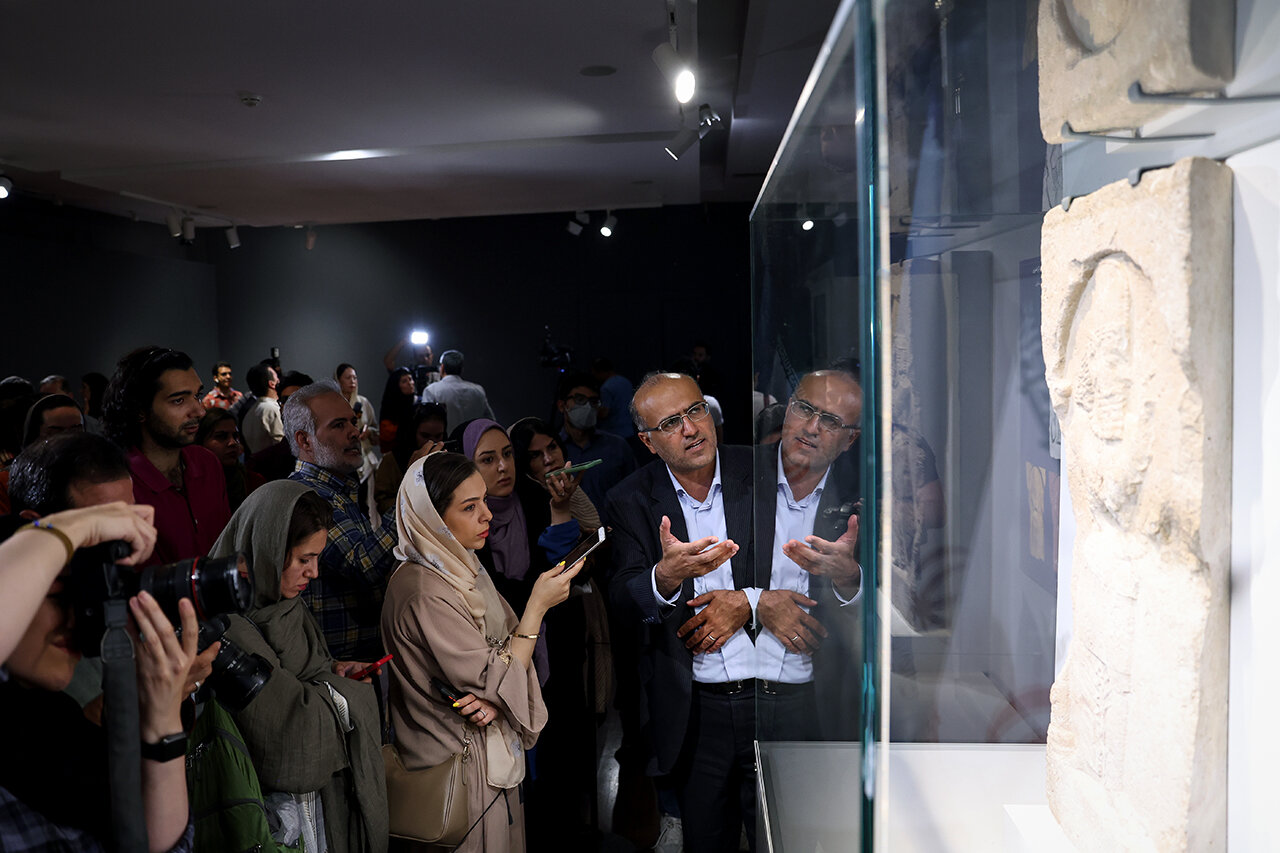Recovered Iranian carving seized by UK border patrol goes on show at National Museum

TEHRAN – This morning, an ancient Iranian carving returned by the UK after it was recovered from smugglers at Stansted airport was put on show at the National Museum of Iran in downtown Tehran.
The fragment sculpture of a bearded man, which could be valued at more than £30m, was bought home on June 28, days after it was delivered to the Iran embassy in London by the UK National Crime Agency.
The unveiling ceremony was attended by Deputy Minister of Cultural Heritage, Tourism and Handicrafts Ali Darabi, National Museum Director Jebrael Nokandeh, and a host of cultural heritage experts and enthusiasts, Mehr reported.
“Based on the 1970 convention, Iran has seriously pursued the return of [smuggled] historical objects,” Darabi said.
“We recently made suggestions on the return of [looted] objects at a recent meeting in China on the cooperation of member countries of the Asian Forum for the protection of cultural heritage,” the deputy minister said.
Nokandeh said this bas-relief dates from the Sassanid era and is made of limestone.
There are only about 30 known Sasanian rock carvings, mostly dating from the third century, and almost all are located in a relatively small area of Iran in Fars province.
Moreover, it is believed that the over-one-meter-tall relief has been hacked out of live rock or on-site carved rock.
Dr. St John Simpson, a senior curator and archaeologist in the British Museum’s Department of the Middle East, said: “We almost never come across a case of something being cut out of the “living rock.” That’s a level of brutalism that surpasses anything.
“You’ve even got felt-tip marks on the back before they’ve used an angle grinder to slice diagonally behind it and across the top. It was then packed in an incredibly bad manner, in a small, almost unpadded crate held together with nails.
“It belongs to a period when Iran was the center of a powerful empire stretching from Syria to the Caucasus and Central Asia, and with its capital at Ctesiphon, south of present-day Baghdad,” he said. “The Sasanians were powerful rivals of Rome and famous today for their fine silverware and cut glass.”
“It looks amazing,” Simpson said. “It is stunningly attractive. The valuation could be anything, really. We’re talking from £20m to £30m-plus. There’s never been anything like it on the market.”
He said the artifact would be “incredibly valuable” on the black market.
Experts say the lack of an inscription makes it impossible to identify the person depicted, but the figures do. His dress and diademed headdress attest to a person of high rank.
Iranian history places a great deal of significance on the Sassanid era, which saw a general renaissance in Persian art and architecture. In 2018, a collection of Sassanian historical cities in southern Iran, known as the “Sassanid Archaeological Landscape of Fars Region,” was inscribed on the UNESCO World Heritage list.
AFM
